Why Are My Potted Geraniums Dying? Tips for a Healthier Bloom
Are you puzzled about why your potted geraniums aren’t thriving as you’d hoped? It’s frustrating to watch their vibrant blooms fade, but you’re not alone in this struggle. Improper watering, poor soil quality, and inadequate sunlight are the most common reasons for dying geraniums. By identifying these issues, you can take simple steps to restore your plants’ health.
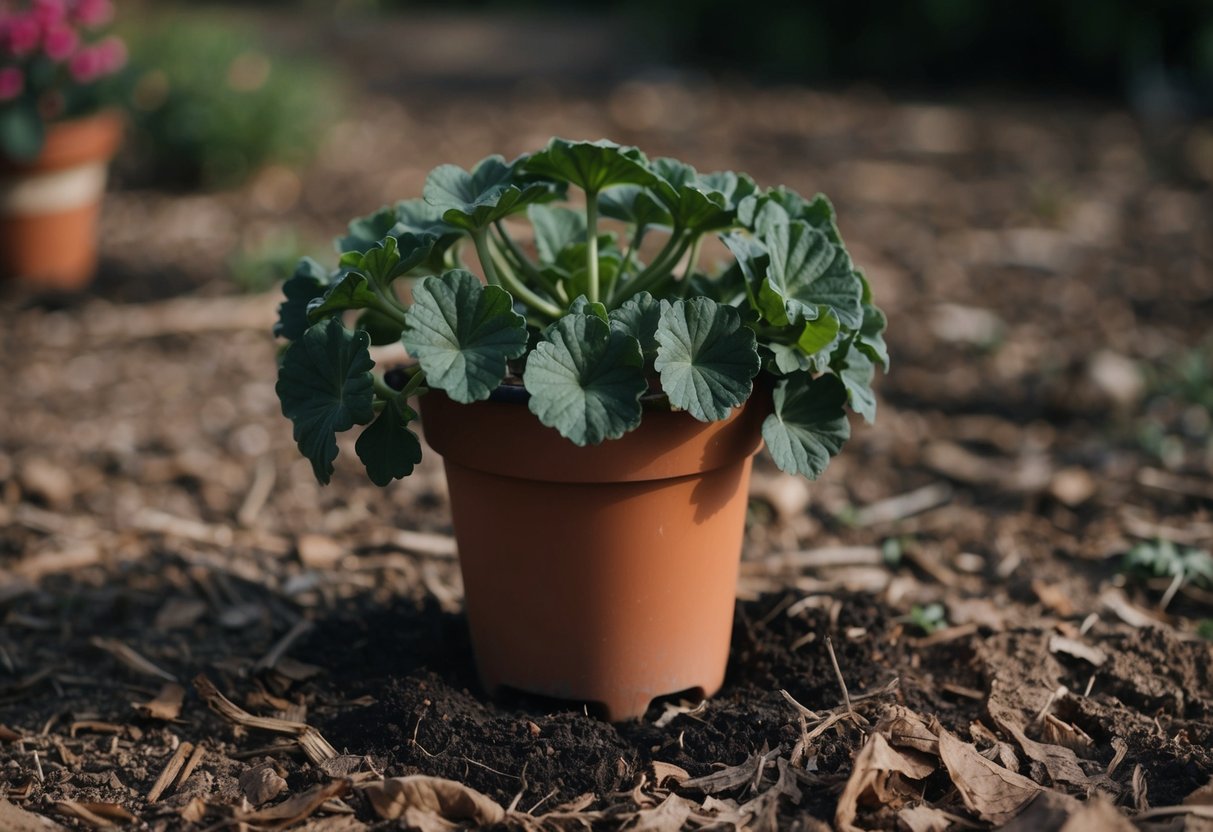
Your geraniums need the right balance of moisture and nutrients to be at their best. Overwatering or underwatering can lead to yellowing leaves or even root rot.
Checking the soil regularly and ensuring it’s well-drained can make a significant difference in plant health. Using compost can improve soil quality and help your plants flourish. Curious to learn more? Delve into common causes and solutions for dying geraniums.
Don’t forget about the importance of sunlight for vibrant blooms. Geraniums thrive in bright light, so make sure they’re placed where they can soak up the sun’s rays. With some adjustments and care, you’ll soon see your geraniums bounce back, displaying the lush growth and vibrant colors you desire.
Common Signs and Symptoms of Distress

Potted geraniums can show signs of distress through a variety of symptoms. Recognizing these early on can help you address issues quickly and maintain healthy plants. Let’s look at some common problems you might notice.
Wilting and Yellowing Leaves
Wilting and yellowing leaves can be alarming to see on your geraniums. Wilting often means the plant is not getting enough water or it’s receiving too much—both are harmful. The yellow leaves can indicate issues like nutrient deficiency, especially a lack of nitrogen, which is crucial for green leaves.
Make sure to water your geraniums properly. The soil should remain moist but not soggy. Consider checking for water drainage problems if wilting persists. To address yellowing, feed your plants with balanced fertilizers to supply essential nutrients.
Browning and Root Rot
Browning leaves and root rot are serious issues that need immediate attention. Overwatering is the main culprit behind root rot, which deprives the roots of necessary oxygen. You might find your geraniums’ leaves browning at the edges or the entire plant becoming weak.
If you suspect root rot, gently remove the plant from its pot to inspect its roots. Healthy roots should be white. Trim away any rotten parts, and replant the geraniums in fresh, well-draining soil. This might help save the plant from further damage.
Leaf Spots and Fungal Growth
Leaf spots and fungal growth usually indicate an infection that could spread quickly. Dark or rusty spots on leaves can hint at diseases like rust, which is a common problem. Fungal growth often thrives in damp conditions, attacking the plant’s health over time.
To combat this, keep leaves dry and ensure good air circulation. You might want to trim the affected leaves to prevent the disease from spreading. Applying a fungicide can also protect your geraniums. Be sure to monitor the plants closely to catch any signs early.
Major Causes and Prevention
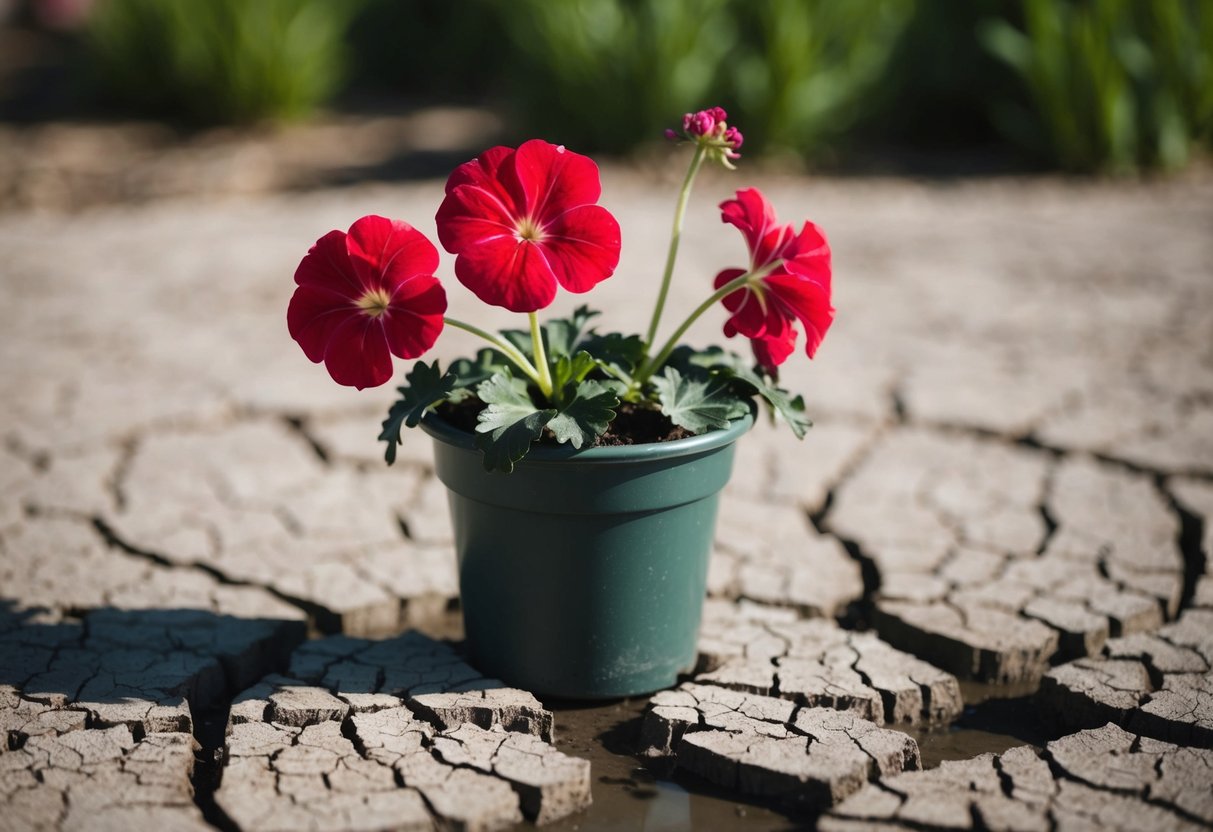
When your potted geraniums start to wilt or turn yellow, several factors could be at play. Common issues include watering mistakes, poor soil quality, and the presence of pests or diseases. Understanding these problems can help you bring your plants back to health and keep them thriving.
Improper Watering Techniques
Watering is a crucial part of plant care, especially for geraniums. Overwatering can lead to waterlogged soil, which deprives roots of oxygen and causes root rot. Signs include wilting and yellowing leaves. Make sure your pots have drainage holes to prevent this issue. Using a soil moisture meter can help you determine when your plants need water.
On the other hand, underwatering causes soil to dry out, leading to dry, crispy leaves. If you notice your geraniums are drooping and the soil feels dry, it’s time to water. Aim to keep the soil evenly moist but not soggy. Regularly check the soil to become familiar with its drying pattern.
Poor Soil and Drainage
Healthy geraniums need well-draining soil. Poor soil can can cause nutrient deficiencies and stress. If the soil is compacted, it might be time to repot your geraniums into a fresh mix. Consider adding perlite or vermiculite to increase drainage.
Proper pot choice is also essential. Pots with drainage holes allow excess water to escape, reducing the risk of root rot. If your container lacks drainage, repotting into one that does can make a big difference.
Pests and Disease Management
Pests like aphids or spider mites can harm your geraniums. Check leaves and stems for small insects or webbing. If you spot any, a gentle spray of water or insecticidal soap can help keep them under control.
Fungal diseases and bacterial diseases may also trouble your plants. Powdery mildew, botrytis, or leaf spot are common. Ensure good air circulation around your plants. Remove affected leaves to prevent further spread. Proper spacing and ventilation can keep diseases at bay, maintaining healthy plants.
Optimal Growing Conditions
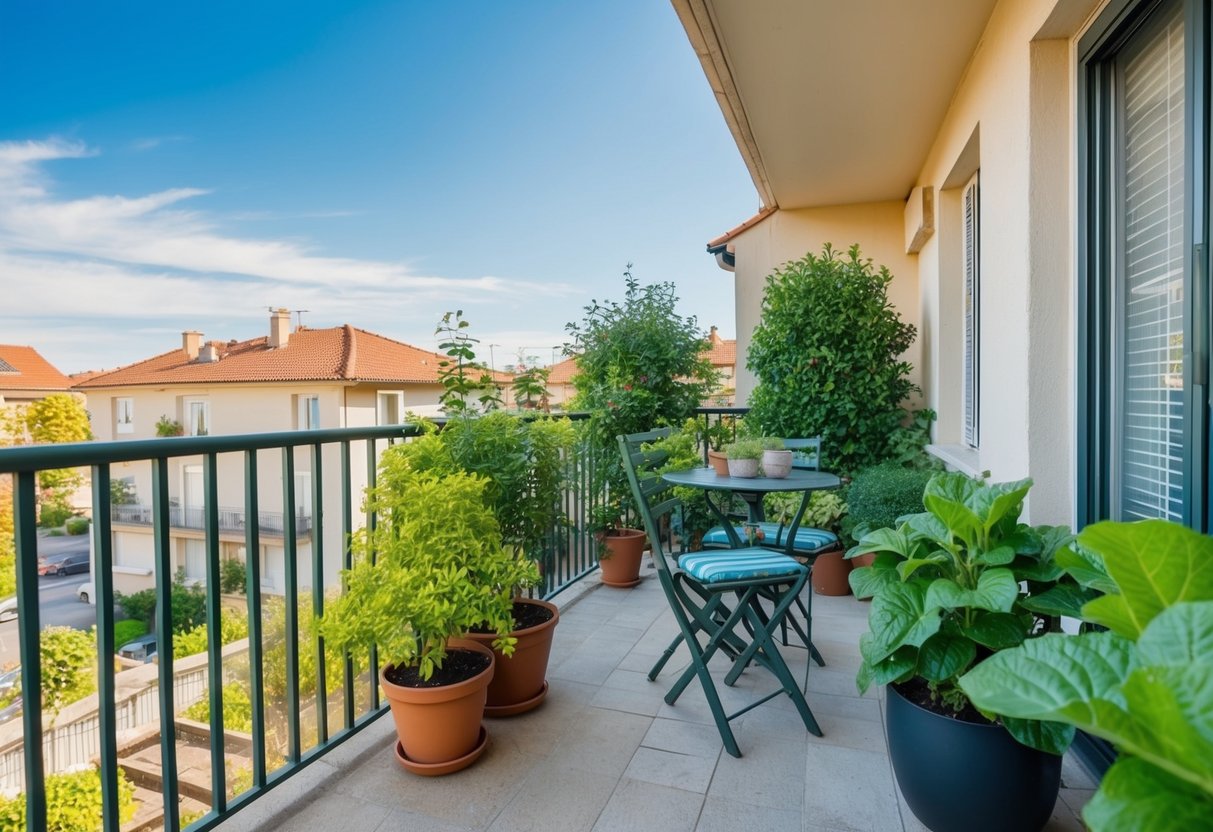
Ensuring the right environment can help your potted geraniums thrive. You need to focus on providing adequate light and maintaining the proper soil conditions to support healthy growth.
Light and Temperature
Your geraniums love sunlight, and the best place for them is where they can get morning sun. They require at least six hours of sunlight each day. Too little sunlight can lead to weak growth and fewer blooms.
While they enjoy sunlight, be cautious of extreme temperatures. Geraniums do not handle cold well, and if your plants are indoors, aim to keep the room warm. On scorching days, a bit of afternoon shade can prevent them from wilting. Balancing sunlight exposure and temperature is key to keeping your plants healthy.
Soil pH and Nutrient Balance
Geraniums prefer well-draining soil with a soil pH between 6.0 and 6.5. If the pH is off, your plants might experience environmental stress, which can cause leaves to turn red. Testing your soil and adjusting as necessary can prevent this issue.
For a nutrient-rich mix, consider adding compost to improve the soil quality. Geraniums need a balance of nutrients like nitrogen, phosphorus, and potassium. If there’s a lack of nutrients, they might not bloom as well. Regular feeding with a balanced fertilizer can support vibrant growth and blooms. For more detailed advice, check out this guide.
Proper Care and Maintenance
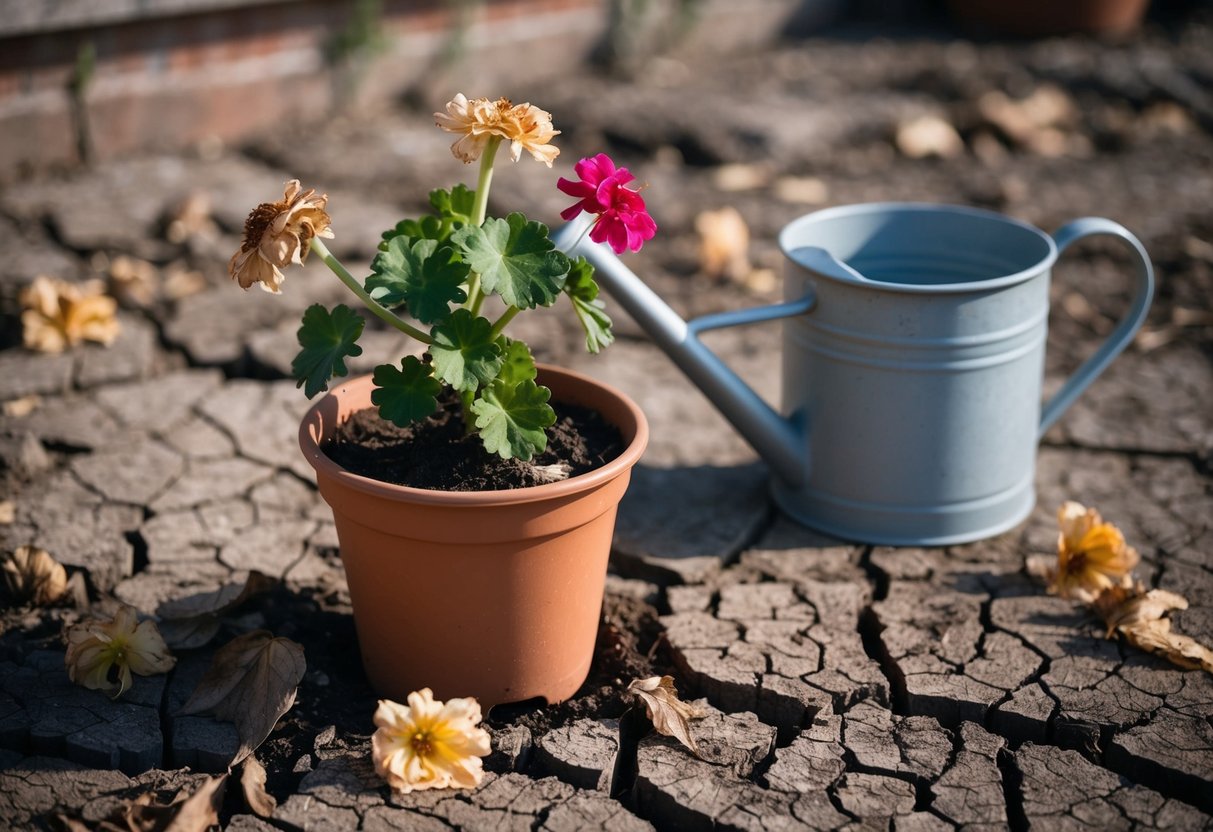
Taking care of your geraniums involves a regular watering and fertilizing schedule and keeping them tidy through pruning and deadheading. Maintaining these practices can help your plants stay healthy and vibrant.
Watering and Fertilizer Schedule
Watering your geraniums correctly is key. They need to stay moist but not soggy, so check the soil regularly. A good rule is to water them when the top inch of soil feels dry. Over-watering can lead to root problems, so be careful not to leave them sitting in water.
Fertilizing your geraniums can provide the nutrients they need. Use a balanced fertilizer every 4-6 weeks during the growing season. A blend high in nitrogen, phosphorus, and potassium is useful for growth and blooms. Geraniums require a balance of potassium, phosphorus, and nitrogen.
Pruning and Deadheading
Pruning is important to keep your geraniums healthy and looking their best. Trim back any dead or yellowing leaves to encourage new growth. Regular pruning helps the plant focus energy on new shoots and flowers.
Deadheading, or removing spent blooms, can stop the plant from wasting energy on seed production. Simply pinch or cut off the dead flowers. This practice encourages your geraniums to produce more flowers. Keeping your plants tidy through regular maintenance can help prevent infections and keep them thriving.
Troubleshooting Common Problems
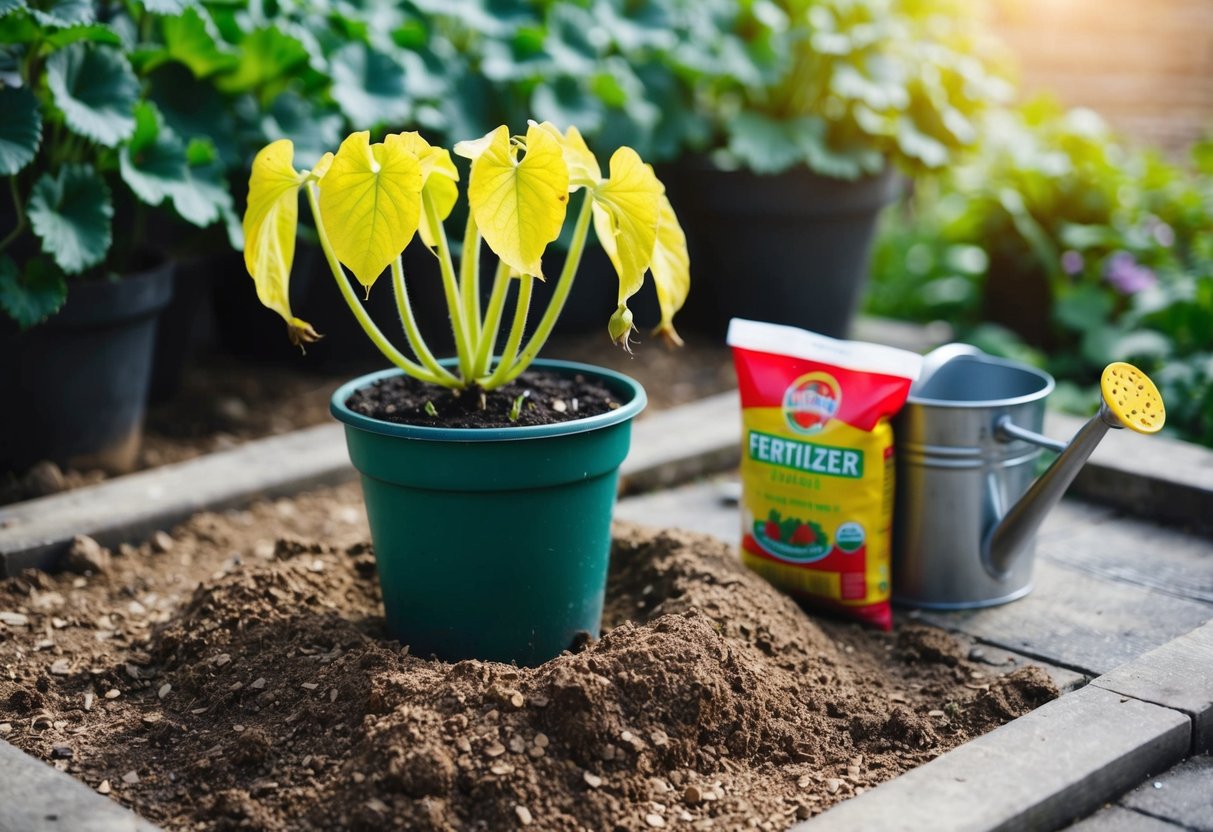
Geraniums can face a variety of issues that affect their health. Pests and infections, along with environmental stressors, are common challenges. Knowing how to identify and address these problems will help your plants thrive.
Dealing with Pests and Infections
Pests like aphids, whiteflies, and spider mites love geraniums. They can sap nutrients and leave your plants looking weak. Check under the leaves for small bugs. A gentle spray with insecticidal soap can help control these pests.
Bacterial infections may show as spots on leaves or stems. If you notice these symptoms, prune the affected parts. Keep the plants dry at the base, as moisture can promote fungal disease. Remove any infected leaves to help prevent the spread. If you detect fungal disease, consider treating the plant with a fungicide. Ensure your geraniums have good air circulation.
Navigating Environmental Stressors
Environmental stressors like improper watering and temperature changes can harm your geraniums. These plants need consistent watering. Both overwatering and underwatering can cause similar issues, such as yellowing leaves.
Check that your pot has adequate drainage to prevent root rot.
Temperature also plays a huge role. Geraniums prefer a moderate climate. Frost or extreme heat can weaken them. Keep them indoors during harsh weather.
Keep in mind that low humidity can stress the plants too. If the air in your home is dry, consider misting the leaves occasionally.
Giving your geraniums adequate sunlight is crucial to their health, but avoid direct, scorching sunlight. Adjust their environment as needed to keep them happy.







